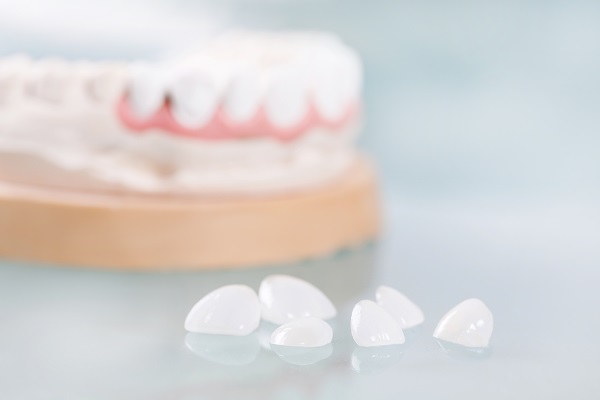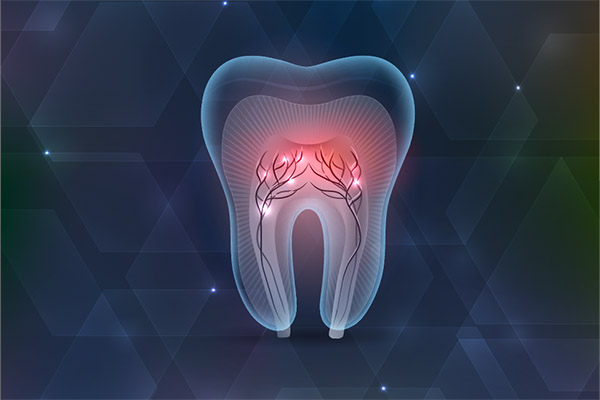How Many Dental Veneers Do I Need?

How many dental veneers a person needs can vary greatly. Some only need one, while others require ten to twelve. Two factors play a big role in how many veneers are necessary to correct a dental issue. Continue reading to learn about these issues and how to more accurately determine the number of veneers you may end up with.
The changes that are desired
Many people choose to get veneers to mask teeth that have been chipped. In this case, if the affected tooth is far enough back in the mouth so as not to be distinctly noticeable, it may be the only tooth requiring a veneer. Other people get veneers to cover up discoloration or slightly alter the shape of a tooth. These issues are usually only a concern for teeth in the front of the mouth that are visible during a smile.
For patients like this, it is generally necessary to get veneers on at least the eight upper teeth in the middle of the mouth. This helps ensure all teeth visible during a smile match and are aesthetically appealing. When the issue is with one of the two front teeth, both teeth almost always need veneers to ensure matching color and symmetry.
Sometimes other cosmetic procedures can be used to reduce the number of necessary veneers. For example, when only one tooth has an issue serious enough to warrant a veneer, professional whitening may be able to lighten the color of the other teeth. This can allow the teeth to match more closely without adding additional veneers. For other patients who have issues with tooth shape, minor dental contouring can be done on the other teeth so the tooth with the veneer does not stand out.
In general, when the desired change is small, such as slight change in shape or length, fewer veneers might be required. When someone wants a more dramatic change in color or size, the difference between the veneer and the surrounding teeth will be much more noticeable, and more veneers can be necessary.
The size of the smile
The size of a person's smile can also play a part in how many veneers are used. Someone with a small mouth might only have six teeth visible during a smile and would only need six veneers. Patients with larger mouths can show a full 10 teeth and would need 10 veneers. For those whose bottom teeth are visible when smiling, an even greater number could be necessary.
Smile size can also determine whether a person needs full or partial veneers. If the entirety of the teeth is exposed during a smile, full veneers are typically recommended. In cases where the lips conceal the tops of the teeth during a smile, a patient may be able to take advantage of partial veneers.
Conclusion
Anyone wanting to change the look of a smile with dental veneers can help determine how many they might need by considering the extent of the desired changes as well as the size of the smile. More drastic alterations and a bigger smile usually mean getting more veneers than a subtle change and a smaller smile.
Are you considering dental veneers in the Red Bluff area? Get more information at https://www.drelloway.com.
Check out what others are saying about our services on Yelp: Read our Yelp reviews.
Related Posts
Root canal treatment is performed to prevent and treat infection in a tooth’s pulp. The term “pulp” refers to the soft tissues housed in a tooth’s pulp chamber. This is the innermost layer of a tooth’s crown, and it is sealed off from the rest of a tooth to prevent oral bacteria and the acids…
If you recently found out that you need to undergo a root canal treatment, you will need to visit a dentist with expertise in the procedure. Many people believe that their dentist is a one-stop shop for all their dental requirements. But this is not always the case. This article contains tips for selecting the…
A dental crown can restore a damaged, worn, or weakened tooth. This restoration can bring back your healthy smile and stable dental function. Knowing the benefits of dental caps can motivate you to set an appointment soon. Here are the benefits of a dental crown that you must consider.Losing a tooth can be annoying, especially…
Your dentist will recommend a root canal treatment to help you keep your damaged tooth. A natural tooth will always be better than a synthetic one. This treatment will restore the appearance of your tooth. If you want to know how a root canal treatment can maintain the natural look of your affected tooth, here…


